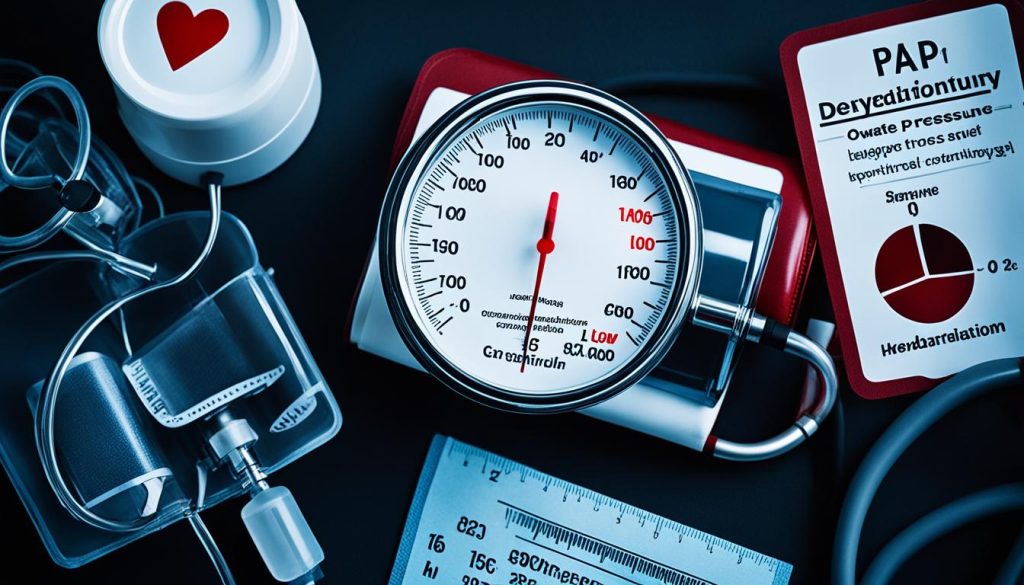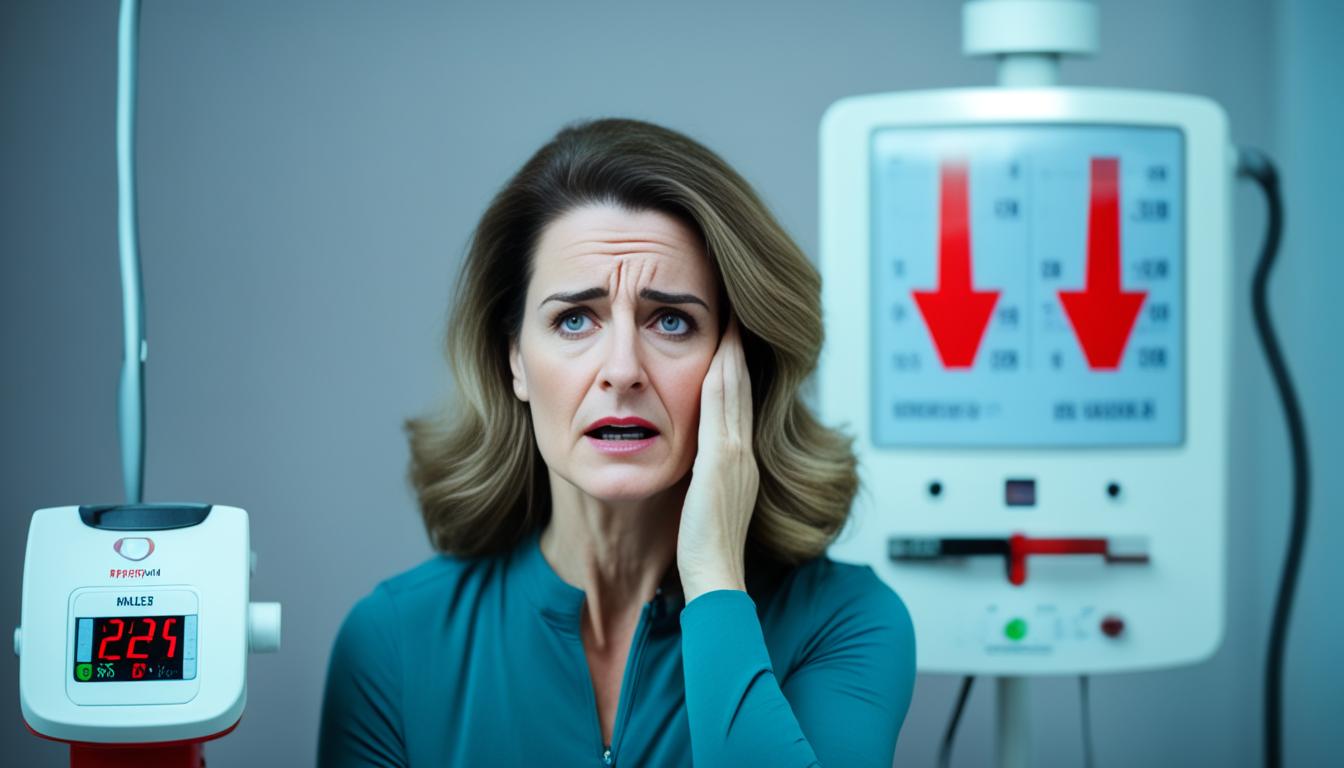Low blood pressure, also known as hypotension, is a condition that can affect both men and women. However, in this article, we will focus specifically on the concept of dangerous low blood pressure in women. It is crucial to understand the risks associated with low blood pressure and be able to recognize the symptoms quickly. By doing so, women can take the necessary actions to prevent potential complications.
Low blood pressure occurs when the force of blood against the walls of the arteries is too low, resulting in inadequate blood flow to the body’s organs and tissues. While low blood pressure can occur naturally for some individuals, it becomes dangerous when it falls below certain thresholds, potentially leading to dizziness, fainting, or worse.
In the following sections, we will delve deeper into understanding low blood pressure in women, explore the symptoms of dangerous low blood pressure, discuss the health risks associated with this condition, examine the causes and factors contributing to it, and provide insights into its treatment and management. By educating ourselves about dangerous low blood pressure, we can empower women to prioritize their health and seek appropriate medical care when needed.
What is a Dangerous Low Blood Pressure for a Woman?
Low blood pressure, also known as hypotension, is a common health condition that can affect both men and women. In this section, we will specifically focus on understanding low blood pressure in women and explore its unique characteristics.
Normal blood pressure levels typically range between 90/60 mmHg and 120/80 mmHg. However, it’s essential to note that these values can vary slightly depending on factors such as age, overall health, and individual differences.
There are several factors that can cause low blood pressure in women. These include:
- Hormonal changes: Women may experience low blood pressure during pregnancy, menstruation, or menopause due to hormonal fluctuations.
- Dehydration: Inadequate fluid intake or excessive sweating can lead to low blood pressure.
- Medication side effects: Certain medications, such as those used to treat high blood pressure or heart conditions, can cause a drop in blood pressure.
- Underlying medical conditions: Conditions like thyroid disorders, diabetes, and adrenal insufficiency may contribute to low blood pressure.
It’s important to note that low blood pressure in women may manifest differently than in men. Women may experience symptoms such as dizziness, fainting, fatigue, and blurred vision. These symptoms can significantly impact daily activities and quality of life.

Differences Between Low Blood Pressure in Women and Men
While low blood pressure affects both genders, there are some notable differences between how it manifests in women compared to men. Research suggests that women may experience more frequent fluctuations in blood pressure levels throughout the menstrual cycle, as well as during pregnancy and menopause.
Additionally, women may be more susceptible to orthostatic hypotension, a condition characterized by a sudden drop in blood pressure when changing from a lying or sitting position to standing. This can lead to symptoms such as lightheadedness and fainting.
1. Understanding the Risks
Although low blood pressure is generally not as concerning as high blood pressure, it can still pose risks, especially if it falls into dangerously low levels. If left untreated, low blood pressure can result in decreased blood flow to essential organs and tissues, leading to dizziness, fainting, and even damage to vital organs.
It’s important for women to monitor their blood pressure regularly, especially if they experience symptoms such as persistent dizziness, fatigue, or fainting. Seeking medical attention and discussing any concerns with a healthcare professional is crucial for proper diagnosis and treatment.
| Risks of Low Blood Pressure in Women | Symptoms |
|---|---|
| Dizziness | Feeling light-headed or faint |
| Fatigue | Excessive tiredness or lack of energy |
| Orthostatic hypotension | Drop in blood pressure upon standing |
| Impaired cognitive function | Trouble concentrating or thinking clearly |
| Organ damage | Decreased blood flow to vital organs |
Symptoms of Dangerous Low Blood Pressure
Recognizing the symptoms of dangerous low blood pressure is crucial for prompt action and appropriate medical intervention. Here are some key symptoms to watch out for:
- Dizziness and lightheadedness: Feeling dizzy or lightheaded, especially when standing up or changing positions, can be an indication of dangerously low blood pressure.
- Fainting or loss of consciousness: Sudden episodes of fainting or loss of consciousness may occur when blood pressure drops to dangerous levels. These episodes can be brief and are often preceded by dizziness.
- Rapid or shallow breathing: Breathing difficulties, such as rapid or shallow breathing, may occur due to inadequate oxygen supply caused by low blood pressure levels.
- Chest pain: Chest pain or discomfort can be a symptom of dangerously low blood pressure, especially if it occurs along with other associated symptoms.
- Weakness and fatigue: Persistent feelings of weakness and fatigue, even with minimal exertion, can be indicative of low blood pressure levels that require medical attention.
- Blurry vision: Blurred or distorted vision, often accompanied by dizziness or lightheadedness, may be experienced when blood pressure drops dangerously low.
- Confusion and difficulty concentrating: Low blood pressure can impair cognitive function, leading to confusion, difficulty concentrating, and impaired decision-making.
If you experience any of these symptoms or suspect that your blood pressure may be dangerously low, it is essential to consult a healthcare professional for an accurate diagnosis and appropriate management.

Comparing Symptoms of Low Blood Pressure and Normal Blood Pressure
| Symptom | Low Blood Pressure | Normal Blood Pressure |
|---|---|---|
| Dizziness and Lightheadedness | Common | Less Common |
| Fainting or Loss of Consciousness | Possible | Rare |
| Rapid or Shallow Breathing | Possible | Unlikely |
| Chest Pain | Possible | Unlikely |
| Weakness and Fatigue | Common | Less Common |
| Blurry Vision | Possible | Unlikely |
| Confusion and Difficulty Concentrating | Possible | Unlikely |
Health Risks of Low Blood Pressure
Low blood pressure, also known as hypotension, can have significant health risks, especially when it falls to dangerously low levels. This is particularly true for women, as they may experience unique health implications related to low blood pressure.
When blood pressure drops too low, it can disrupt the normal functioning of vital organs and systems in the body. Some of the potential health risks associated with dangerously low blood pressure in women include:
- Increased risk of fainting: Extremely low blood pressure can cause fainting spells, which can be dangerous, especially if they occur suddenly and lead to falls or injuries.
- Decreased blood flow to the brain: Insufficient blood flow to the brain can result in dizziness, confusion, and even loss of consciousness.
- Compromised organ function: Vital organs such as the heart, kidneys, and liver may not receive adequate blood supply, leading to impaired function and potential organ damage.
- Worsening cardiovascular conditions: Women with existing cardiovascular conditions, such as heart disease or heart failure, may experience worsening symptoms due to low blood pressure.
- Impaired cognitive function: Insufficient blood supply to the brain can affect cognitive abilities, memory, and overall brain function.
- Increased risk of falls: Dizziness and lightheadedness resulting from low blood pressure can increase the risk of falls, particularly among older women.
It is important to note that these health risks can vary in severity depending on the individual and the degree of low blood pressure. Regular blood pressure monitoring and seeking medical attention when experiencing symptoms is crucial to prevent complications.

Next, we will explore the causes and factors contributing to dangerously low blood pressure in women, shedding light on the underlying triggers for this condition.
Causes and Factors Contributing to Dangerous Low Blood Pressure
Understanding the causes and factors that contribute to dangerous low blood pressure in women is essential for preventing and managing this condition effectively. Several factors can lead to dangerously low blood pressure levels, some of which are:
1. Medications
Certain medications, such as blood pressure-lowering drugs, diuretics, and antidepressants, can cause a drop in blood pressure. It is crucial to be aware of the potential side effects of any medication and consult a healthcare professional if you suspect it is contributing to your low blood pressure.
2. Dehydration
Dehydration can lead to a decrease in blood volume, resulting in low blood pressure. It is vital to stay properly hydrated by drinking an adequate amount of water throughout the day.
3. Heart Conditions
Conditions affecting the heart, such as heart valve problems or a weak heart muscle, can disrupt the normal pumping action, leading to low blood pressure. If you have been diagnosed with a heart condition, it is essential to work closely with your healthcare provider to manage your blood pressure effectively.
4. Endocrine Disorders
Disorders of the endocrine system, such as hypothyroidism and Addison’s disease, can affect blood pressure regulation. Proper management of these conditions is crucial to prevent dangerously low blood pressure.
5. Pregnancy
During pregnancy, hormonal changes and increased blood volume can cause a temporary drop in blood pressure. While this is generally normal, it is essential for pregnant women to monitor their blood pressure levels closely and consult their healthcare provider if they experience any concerning symptoms.
6. Nutritional Deficiencies
Inadequate intake of essential nutrients, such as vitamin B12 and folate, can contribute to low blood pressure. A balanced diet rich in fruits, vegetables, lean proteins, and whole grains can help maintain healthy blood pressure levels.
By understanding these causes and risk factors, women can take proactive measures to prevent dangerous low blood pressure. Implementing lifestyle changes, such as staying hydrated, managing stress, and following a nutritious diet, can significantly contribute to maintaining optimal blood pressure levels.

Risk Factors for Dangerous Low Blood Pressure
In addition to the causes mentioned above, certain risk factors can increase a woman’s susceptibility to dangerous low blood pressure:
- Age: Older adults are more prone to low blood pressure.
- Genetics: Some individuals may have a genetic predisposition to low blood pressure.
- Underlying Medical Conditions: Individuals with conditions such as diabetes, Parkinson’s disease, or autonomic disorders may be at higher risk.
- Postural Hypotension: Rapid changes in body position, such as standing up too quickly, can cause a sudden drop in blood pressure.
| Risk Factors | Description |
|---|---|
| Age | Older adults are more prone to low blood pressure. |
| Genetics | Some individuals may have a genetic predisposition to low blood pressure. |
| Underlying Medical Conditions | Individuals with conditions such as diabetes, Parkinson’s disease, or autonomic disorders may be at higher risk. |
| Postural Hypotension | Rapid changes in body position, such as standing up too quickly, can cause a sudden drop in blood pressure. |
Treatment and Management of dangerously Low Blood Pressure in Women
When it comes to treating and managing dangerously low blood pressure in women, there are several options available, ranging from lifestyle changes to medications and other interventions. It is essential to collaborate closely with healthcare professionals to develop an individualized treatment plan that suits your specific needs and circumstances.
Lifestyle Modifications
Adopting certain lifestyle changes can play a significant role in managing dangerously low blood pressure. These modifications might include:
- Increasing salt intake: Consuming slightly more salt than usual, under the guidance of a healthcare professional, can help raise blood pressure levels.
- Staying hydrated: Adequate hydration is crucial in maintaining blood volume and preventing further drops in blood pressure.
- Wearing compression stockings: These stockings can help improve circulation and prevent blood from pooling in the lower extremities, thereby increasing blood pressure.
- Engaging in regular exercise: Physical activity, especially activities that involve standing up, can help regulate blood pressure levels.
Medications
In some cases, healthcare professionals may prescribe medications to manage dangerously low blood pressure in women. The choice of medication will depend on individual factors and underlying causes. Commonly prescribed medications may include:
- Fludrocortisone: This medication helps increase blood volume and constrict blood vessels, ultimately raising blood pressure levels.
- Midodrine: Midodrine acts by constricting blood vessels, thus increasing blood pressure.
- Pyridostigmine: This medication helps improve nerve signals to the blood vessels, leading to increased blood pressure.
Other Interventions
In addition to lifestyle modifications and medications, healthcare professionals may suggest other interventions to manage dangerously low blood pressure. These interventions may include:
- Intravenous (IV) fluids: In severe cases, IV fluids may be administered to rapidly increase blood volume and raise blood pressure.
- Tilt table therapy: This therapy involves lying on a specially designed table that can change positions gradually, allowing the body to adjust to different postures and improve blood pressure regulation.
To ensure effective treatment and management of dangerously low blood pressure, regular follow-ups with healthcare professionals are crucial. They can monitor your progress, make necessary adjustments to your treatment plan, and provide ongoing support throughout your journey to better health.
Conclusion
In conclusion, dangerously low blood pressure can pose significant complications for women. The risks associated with low blood pressure include dizziness, fainting, and inadequate blood supply to vital organs. It is essential to promptly recognize the symptoms of dangerously low blood pressure, such as fatigue, blurred vision, and rapid pulse, to avoid potential complications.
Untreated low blood pressure can lead to organ damage, including damage to the heart, brain, and kidneys. Women with pre-existing medical conditions, such as diabetes or heart disease, may be more susceptible to these complications. Therefore, it is crucial to monitor blood pressure levels regularly and seek medical attention if necessary.
To manage dangerously low blood pressure effectively, lifestyle modifications such as regular exercise, a balanced diet, and adequate hydration are recommended. In some cases, medications may be prescribed to regulate blood pressure levels. It is important to work closely with healthcare professionals to develop a personalized treatment plan that suits individual needs and addresses the underlying causes of low blood pressure.
Overall, understanding the complications and taking proactive measures to manage dangerously low blood pressure is crucial for women’s health and well-being. By staying vigilant and seeking appropriate medical care, women can mitigate the potential risks and maintain a healthy blood pressure range.




